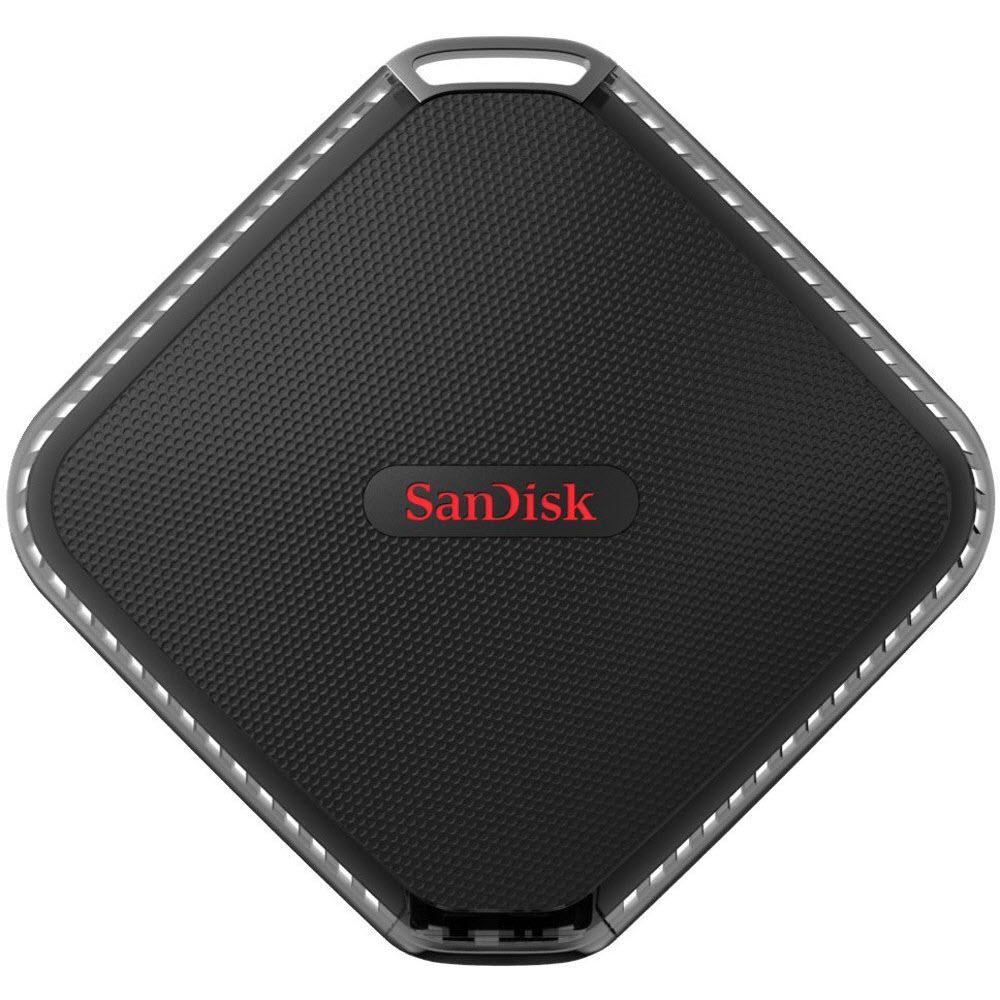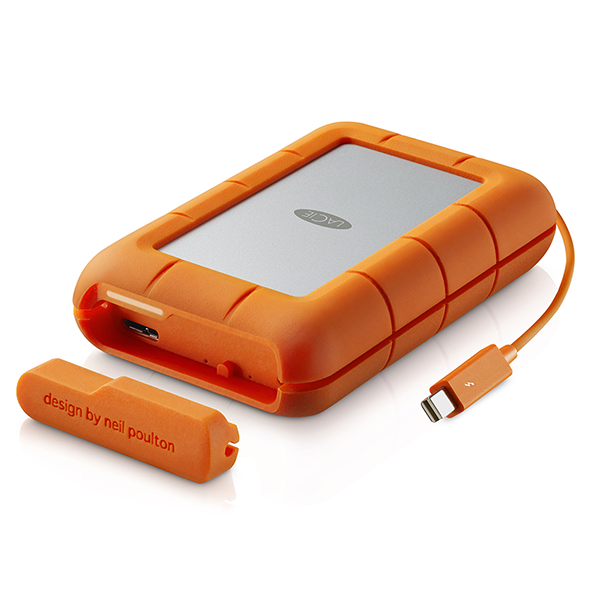SanDisk Extreme 510 Portable SSD Review
Why you can trust Tom's Hardware
Performance Testing And Conclusion
Comparison Products
We included four other portable products with a diverse background in our test pool. The SanDisk Extreme 500 Portable 240GB is another flash-based portable storage solution that fits easily into your pocket and takes on a less-than-traditional shape. SanDisk also lists the Extreme as dust and splash resistant. We tested this product back in May 2016.
We tested the Seagate Backup Plus Ultra Slim 2TB last September. Its selling price is slightly less than the three Adata flash-based products we have under the microscope, and it offers a massive capacity increase. The internal hard disk drive makes it more susceptible to falls, and it lacks the ability to chew through random and small-block data with the same performance as an SSD.
The LaCie Rugged RAID 4TB is what happens when a hard disk drive company wants to compete with SSDs in performance and ruggedness. The drive features both Thunderbolt 2 and USB 3.0 5Gb/s connections and two internal 2TB hard disk drives running in either RAID 1 or RAID 0. The external case design and internal shock system increase the Rugged RAID's sustainability in a fall. The extra components add to the cost; expect to spend around $400 thanks to the expensive Thunderbolt bridge chip.
The Adata SV620 480GB is the newest product we tested in a recent roundup of Adata portable SSD products. It features a desktop consumer SSD inside, just like the Extreme 510 Portable.
Sequential Scaling
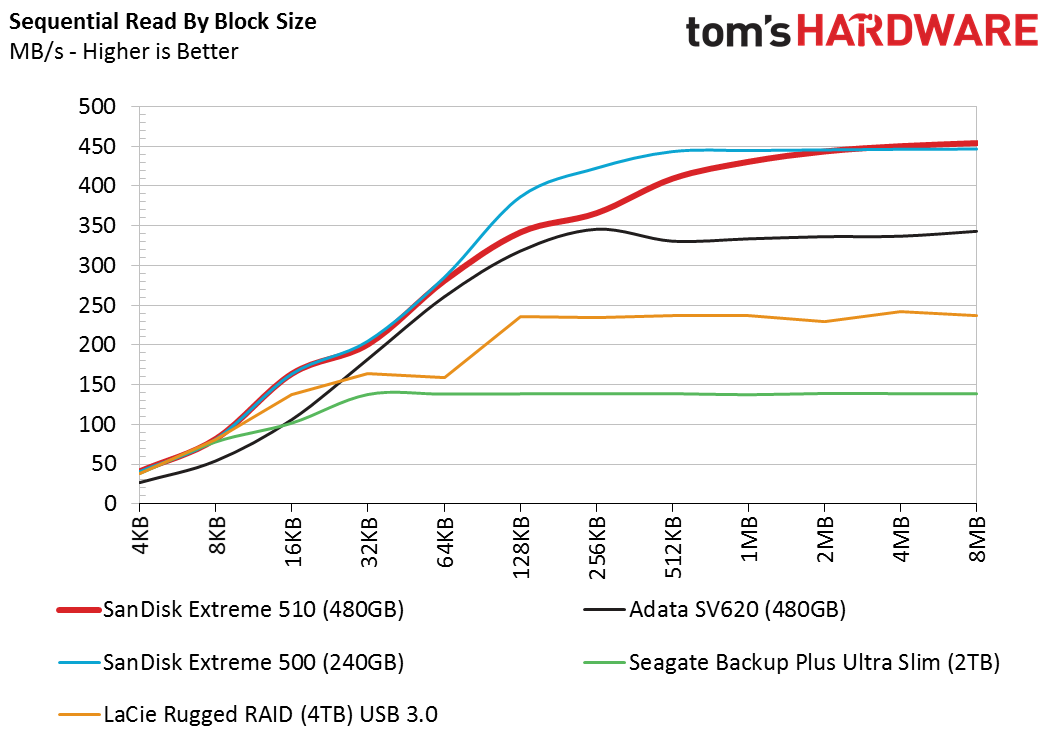
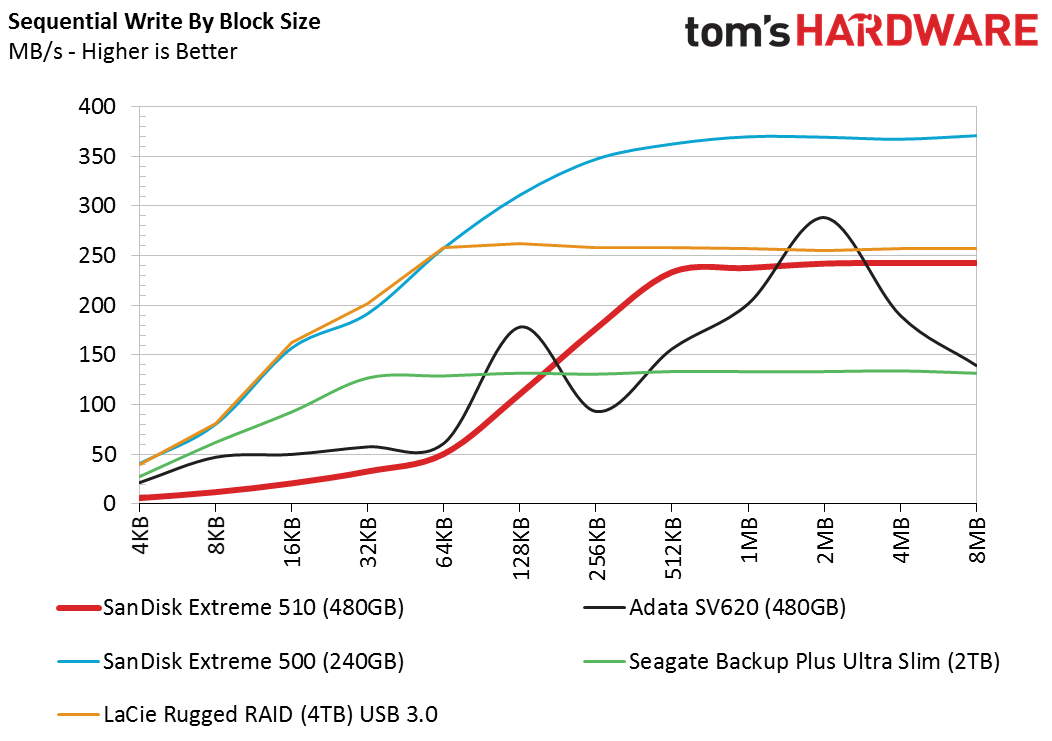
When we read data back from the Extreme 510 Portable, it delivered nearly identical performance with smaller block sizes compared to the 500 model. The older Extreme 500 Portable is faster in 128KB, 256KB, and 512KB blocks, with 128KB being the most significant of the trio.
We ran into an issue when we wrote data to the Extreme 510 Portable. All our tests start off with two passes of 128KB sequential data across the entire LBA range, and then we delete the data after each pass to wear the flash into a "used" state. This takes the device out of the "Fresh Out of Box" (FOB) state but still lets the drives erase the data. The Extreme 510 Portable didn't like the two passes and write performance plunged. The write test with increasing block sizes highlights the wide gap between the 500 series 240GB and the new 510 series 480GB. The Extreme 500 Portable is the fastest external SSD in our tests, but the newer model doesn't follow the same path.
Full LBA Span Performance
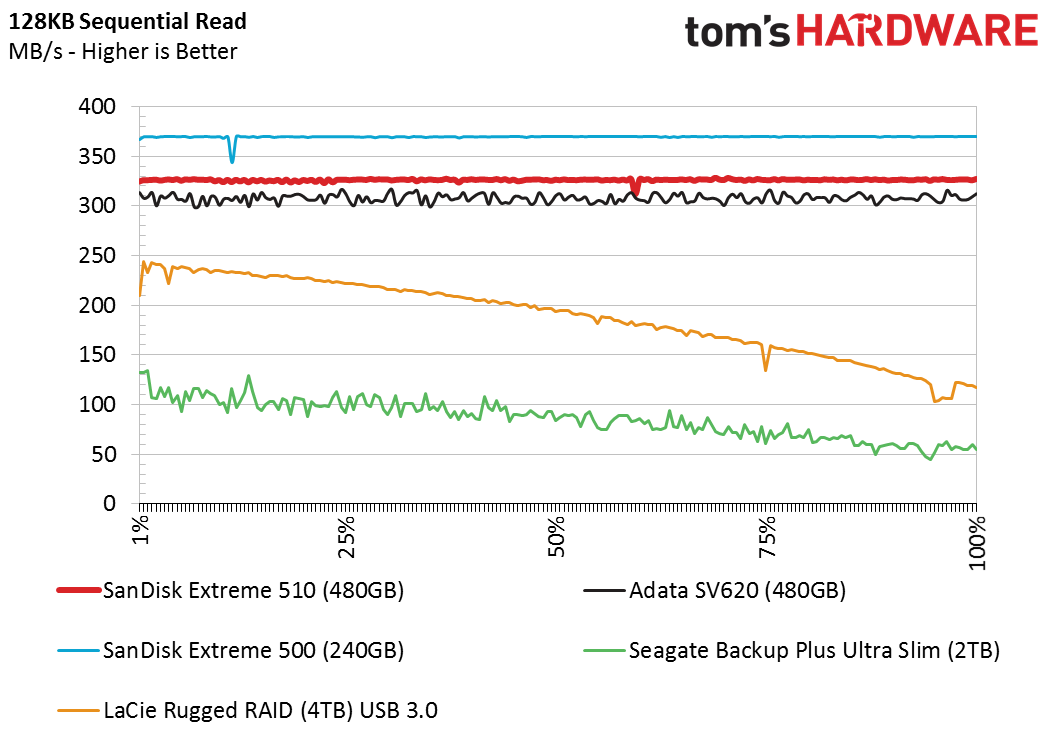
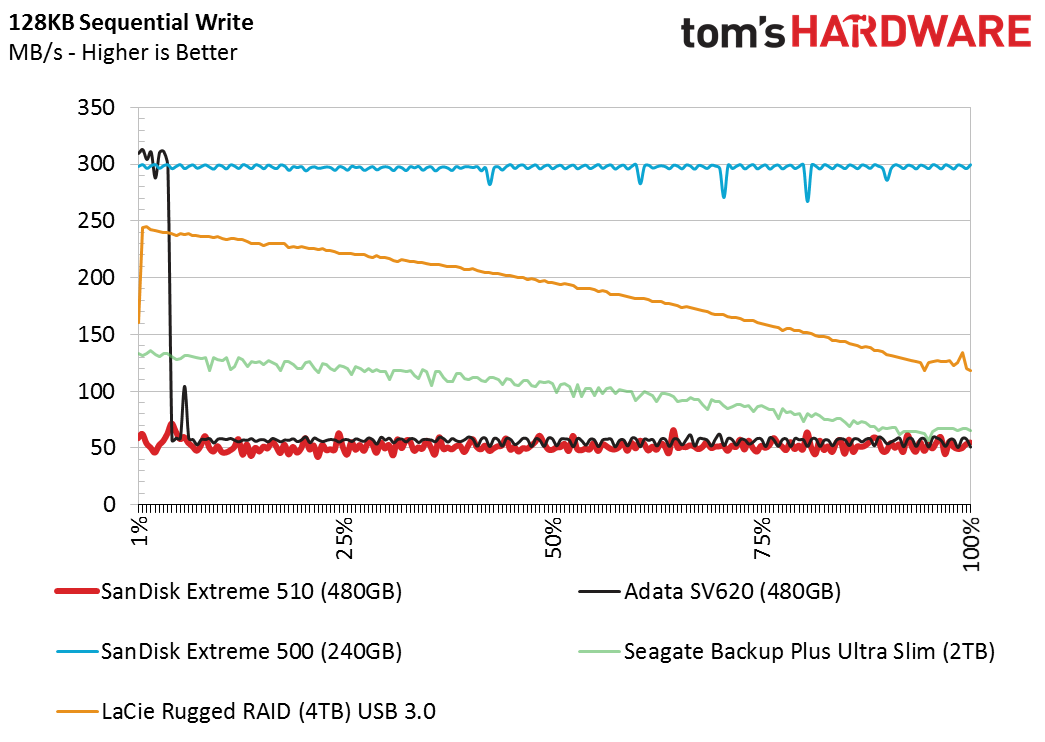
The SanDisk Extreme 510 Portable delivers the second-highest 128KB sequential read speed across the entire LBA range, and it delivers very consistent performance. The previous-generation model is the only product in this group that is faster.
Get Tom's Hardware's best news and in-depth reviews, straight to your inbox.
Writing data across the entire LBA range tells a different tale. The Extreme 510 Portable SSD doesn't seem to burst during sequential data writes. SanDisk doesn't mention anything about nCache on the product page, but it is a known feature on the Ultra II desktop consumer SSD. Without the cache working as it should, the drive delivers abysmal write performance that often drops below 50 MB/s. The two products based on legacy hard disk drive technology are faster throughout their entire LBA range.
The Extreme 510 Portable SSD still delivers superior access time and higher IOPS performance than the two hard disk drives, so it should be faster with small data writes.
File Transfers
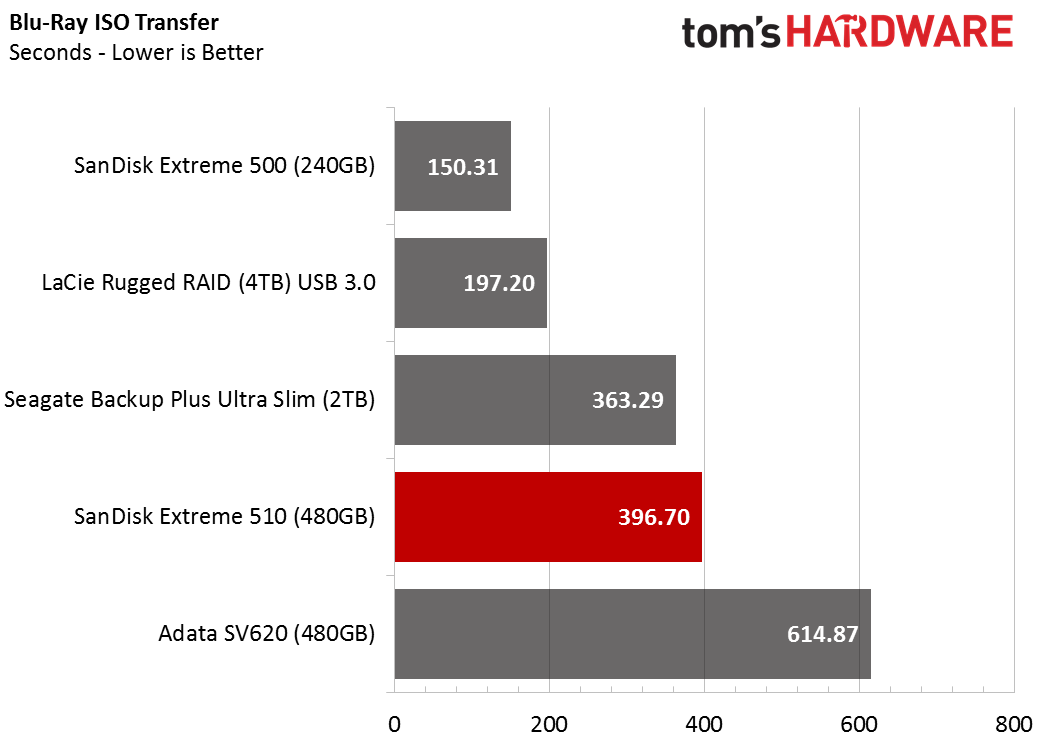

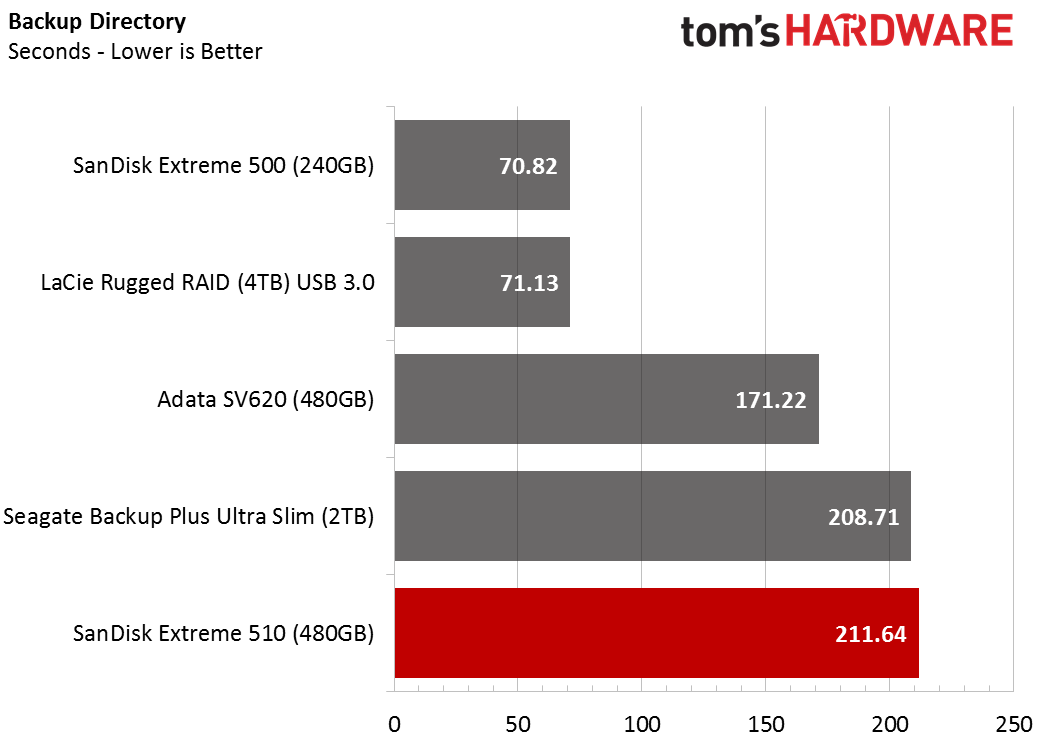
I love testing storage products and plotting the results over time. We often see performance measured in throughput, but most people would rarely say, "Wow, that transfer was really fast—I bet it was doing at least 150 MB/s." Time-based results are easier to interpret because the sense of time is universal.
We tested with the Avatar (2D + 3D Edition) Blu-ray. We used rFactor from the post-installation directory (C:/Program Files) for the Game directory. The Directory Test is a 15.2GB block of data I modeled for another project several years ago. It comes from a daily-use notebook and contains a mix of images, software installations, ISO files, and multimedia that yields a nice real-world workload.
What a difference one product generation makes. The Extreme 500 Portable 240GB writes the Blu-Ray ISO file in just 150 seconds, while the new 510 model takes nearly 400 seconds to write the same file. That is slightly longer than the Seagate Backup Plus Ultra Slim at 363 seconds.
The game directory test using an rFactor installation yields a 3x increase in the transfer time between the 500 and new 510 Portable SSDs. This test uses many small files from the installation directory. We expected more separation between the 510 and the Seagate Backup Plus Ultra Slim. The 510 was faster, but the difference is less than five seconds.
The third and final test moves a significant amount of data. It is essentially transferring a My Documents folder from an older Windows installation. The 15.2GB of files are a mix of large and small files. This test is the worst-case scenario for the Extreme 510 Portable SSD. The drive took 211 seconds to write the file, and every other external product on the chart outperformed it. The Extreme 510 Portable took just 71 seconds to transfer the same workload.
Conclusion
We wonder why SanDisk released a product that is so much slower than the previous generation model. We ran our tests several times and tried different methods to restore performance. We formatted the drive several times, sent Optimize commands from Windows 10 and allowed it to idle for days. Eventually, we concluded that if you fill the Extreme 510 Portable SSD with a lot of data, the performance seems to drop to a very low level during write workloads.
We didn't observe the same problem with the Extreme 500 Portable 240GB or the high-performance Extreme 900 Portable 2TB. I'd have to say both are superior products to the new Extreme 510 480GB--even though we do like the red bumper on the new drive. Given the large price gap between the two, the Extreme 500 Portable SSD with 480GB of capacity is a bargain at $150. Not only does it deliver higher performance, but it also costs 25% less. The exterior design is nearly identical because both share the same rugged frame. With its new product available, we don't know how long SanDisk will leave the superior product on store shelves, so you may want to hurry.
MORE: Best SSDs
MORE: How We Test HDDs And SSDs
MORE: All SSD Content

Chris Ramseyer was a senior contributing editor for Tom's Hardware. He tested and reviewed consumer storage.
